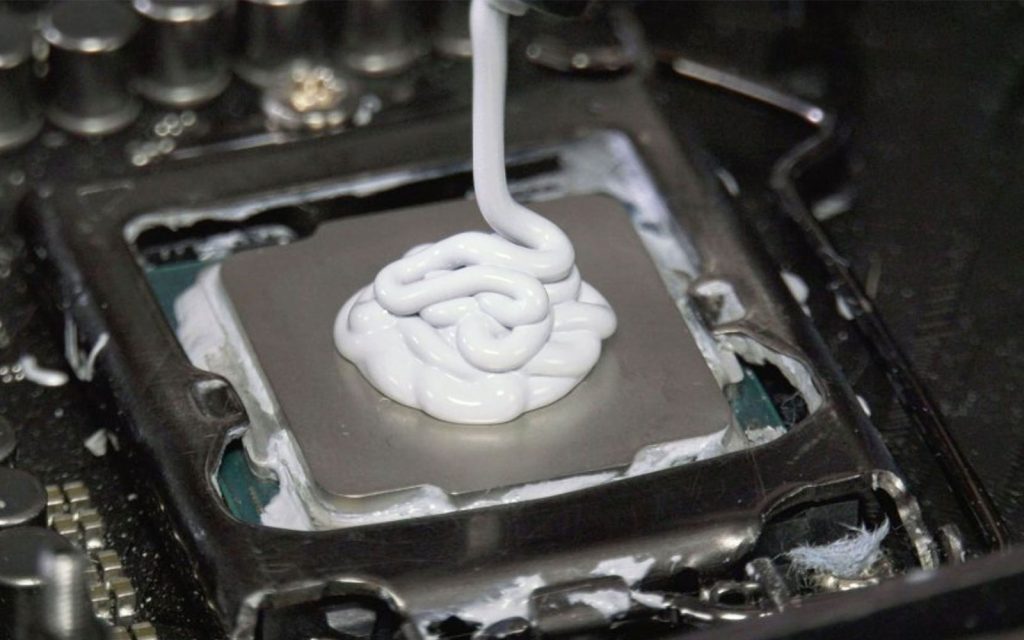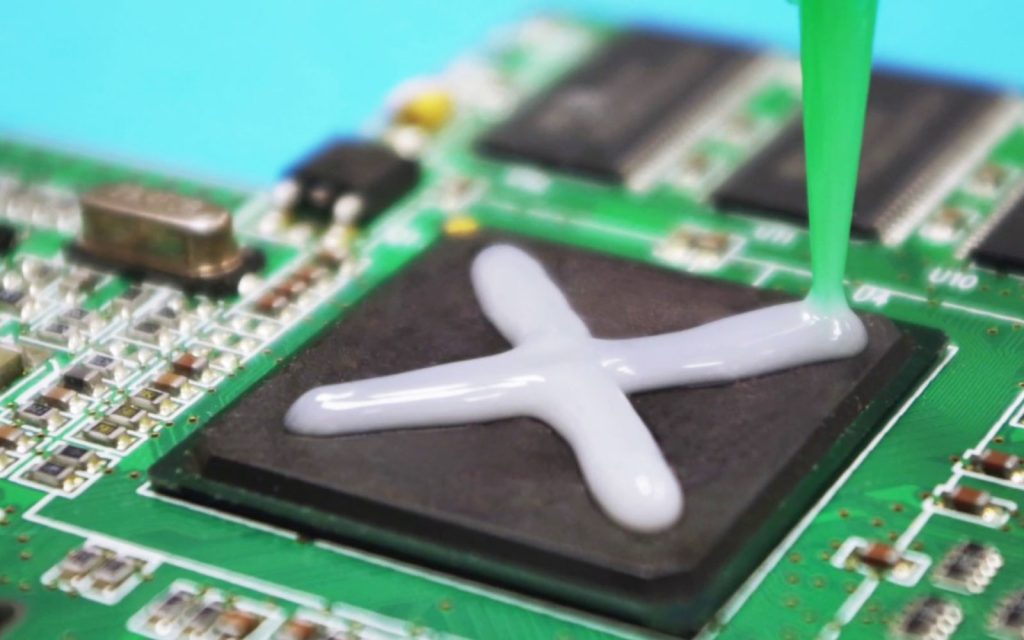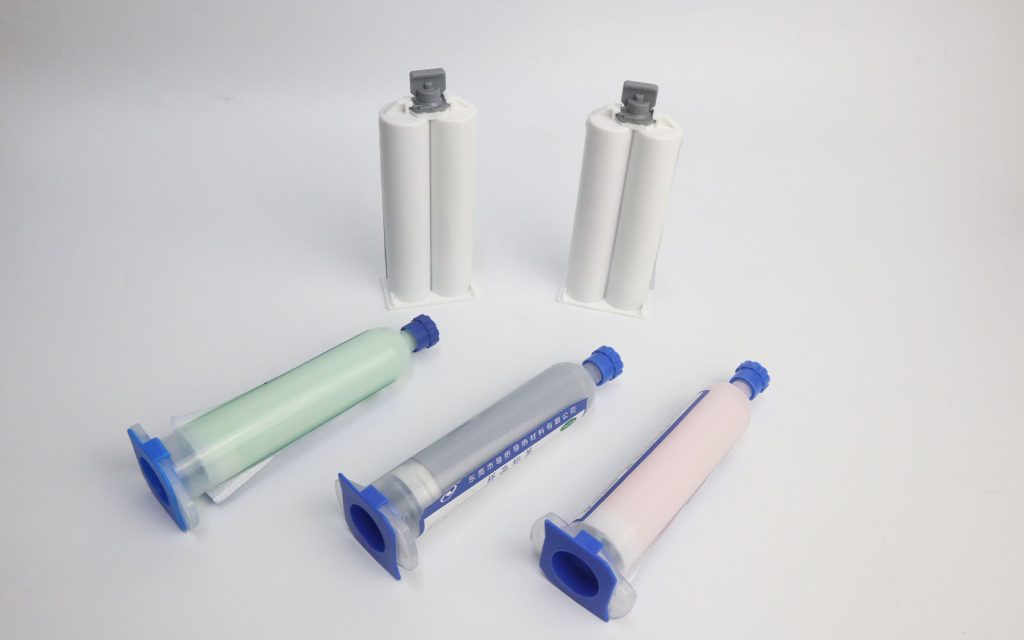Thermally conductive gel is a soft, flexible substance made from a combination of silicone, ceramic fillers, and other materials that have high thermal conductivity properties. It’s designed to fill the microscopic air gaps between heat-producing components, such as CPUs, GPUs, and other sensitive electronic parts, and the heat sinks or heat spreaders, ensuring efficient thermal transfer.

Applications of Thermally Conductive Gel
Thermally conductive gel is used across various industries due to its superior thermal management properties. Here are some common applications:
- Electronics and Consumer Devices
- Computers and Laptops: In high-performance computing devices, such as desktop PCs and laptops, thermally conductive gel is used to transfer heat from the CPU and GPU to the heat sink, improving the cooling efficiency and preventing overheating.
- Smartphones and Tablets: With the increasing power of mobile devices, thermally conductive gels are applied to dissipate heat generated by processors, batteries, and other components, ensuring smooth operation and preventing potential damage due to overheating.
- Power Supplies: It helps maintain safe temperature levels by efficiently transferring heat away from power components, ensuring stable operation.
- Automotive Industry
- Electric Vehicles (EVs): As EVs become more widespread, thermally conductive gel is used in battery packs, power inverters, and electric motor components to manage heat and enhance performance, thereby improving battery efficiency and extending lifespan.
- Lighting Systems: Automotive lighting systems, including LED lights, benefit from thermally conductive gel to manage the heat generated, ensuring optimal brightness and reducing the risk of failure.
- Industrial Equipment
- LED Lighting: LEDs produce substantial heat during operation. By using thermally conductive gel, heat is effectively transferred to the heat sinks, preventing premature failure and improving lifespan.
- Telecommunication Equipment: In telecom equipment like base stations and network devices, thermally conductive gel ensures that components such as power amplifiers remain at optimal operating temperatures.
- Medical Devices: Certain medical devices with sensitive electronics rely on thermal gel to ensure that the electronic components remain within safe operating temperatures, preventing malfunctions.
- Renewable Energy Systems
- Solar Panels: Solar inverters and panels generate a significant amount of heat under prolonged sun exposure. By using thermally conductive gel, heat is dissipated more efficiently, ensuring the longevity and performance of the system.
- Wind Turbines: The components of wind turbines, such as generators and power converters, use thermally conductive gel to regulate temperature and prevent overheating, ensuring consistent and reliable energy production.
- Aerospace and Defense
- Satellite Components: Space-based electronics are exposed to extreme temperature fluctuations. Thermally conductive gel is used to stabilize temperature across critical components like sensors and circuit boards, ensuring optimal performance in space.
- Military Equipment: The thermal gel helps dissipate the heat from high-powered devices used in military applications, ensuring the equipment works efficiently without overheating under tough conditions.
- Renewable Energy Systems
- Power Electronics: In power electronics systems such as inverters, transformers, and power supplies, thermally conductive gel plays a critical role in heat dissipation, ensuring the systems operate at maximum efficiency.

Why Choose Thermally Conductive Gel?
Thermally conductive gel offers several advantages compared to traditional thermal solutions, such as thermal pads or pastes:
- High Thermal Conductivity: It provides excellent heat transfer, which is essential for maintaining the performance of high-power components.
- Flexible Application: Its gel-like consistency allows for easy application and adaption to different surfaces and complex geometries.
- Durability: Unlike some thermal materials, thermally conductive gel does not dry out or crack over time, ensuring long-lasting performance.
- Non-Electrically Conductive: This makes it safe for use in electronic applications where the risk of short circuits is a concern.
- Ease of Use: It’s easy to apply and often does not require special tools or skills, making it a popular choice for manufacturers and technicians.

Conclusion
Thermally conductive gel is an essential material for managing heat in various applications, from consumer electronics to industrial equipment and beyond. Its ability to transfer heat efficiently while maintaining flexibility and ease of use makes it a go-to solution for engineers and manufacturers looking to enhance the performance and longevity of their products. Whether you are in the electronics, automotive, medical, or renewable energy sector, thermally conductive gel is an invaluable tool in keeping your devices cool and running smoothly.
If you’re interested in sourcing high-quality thermally conductive gel for your products, contact us today to learn more about our production capabilities and the solutions we offer.
